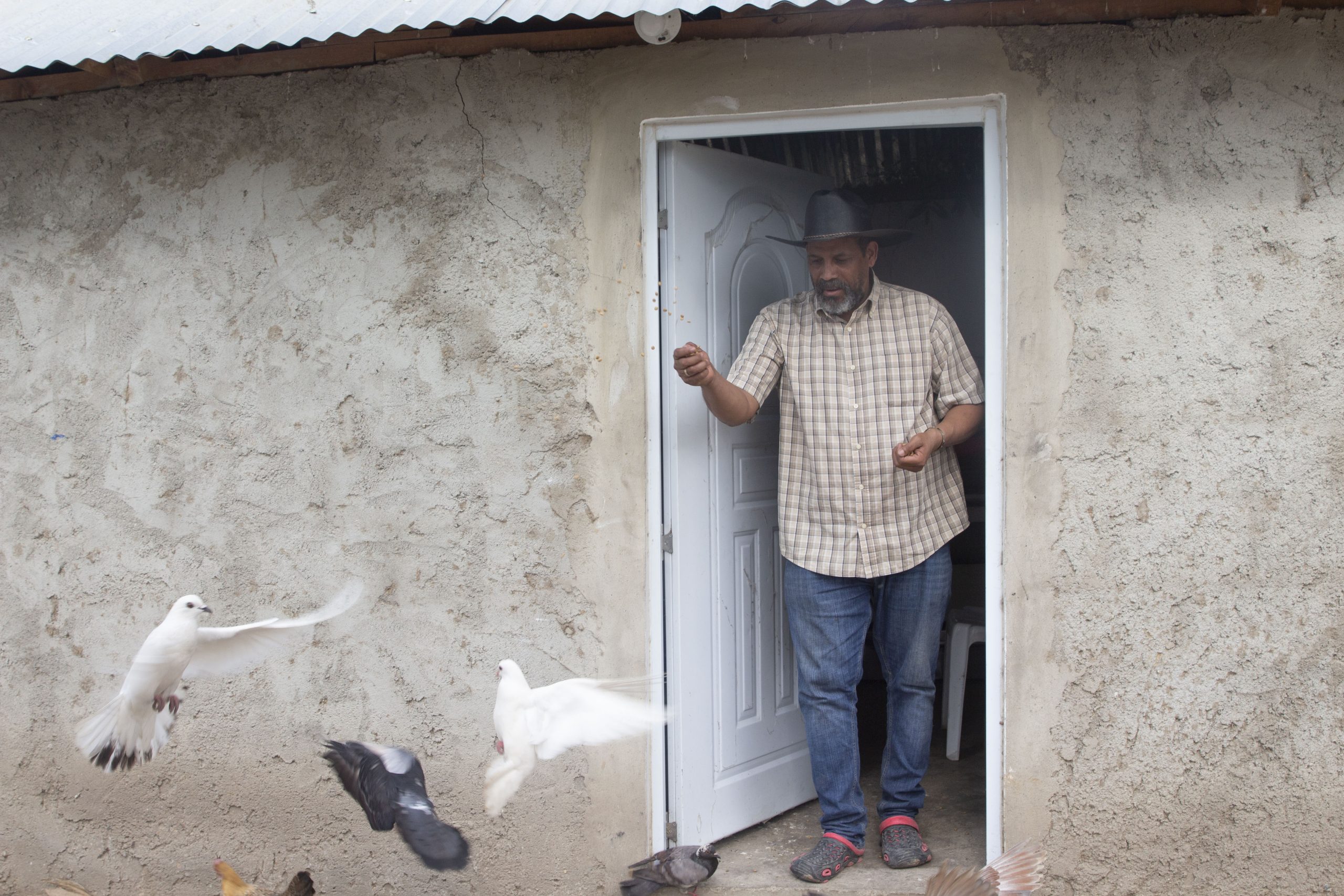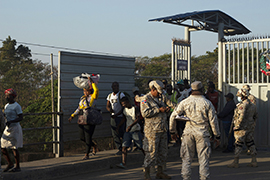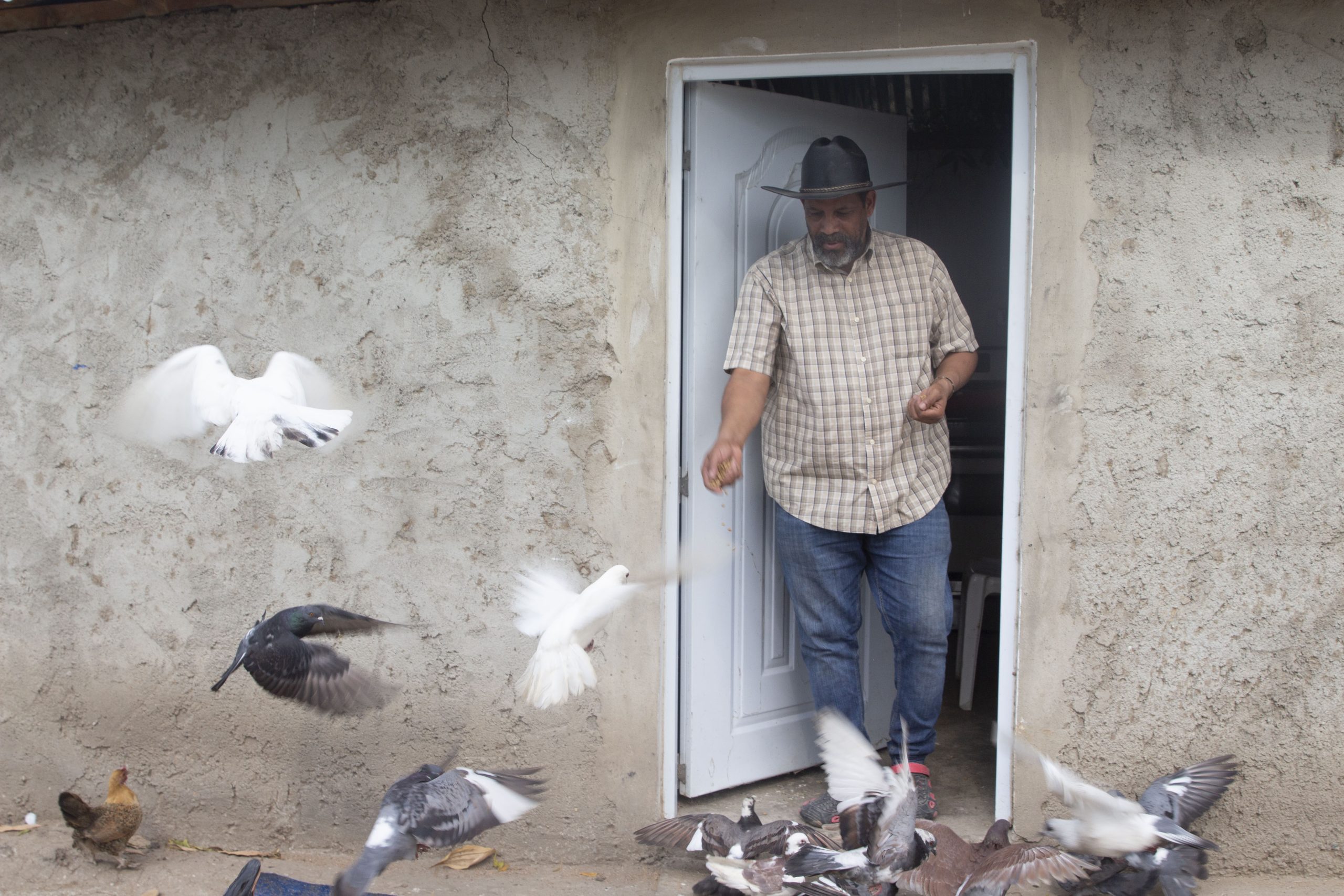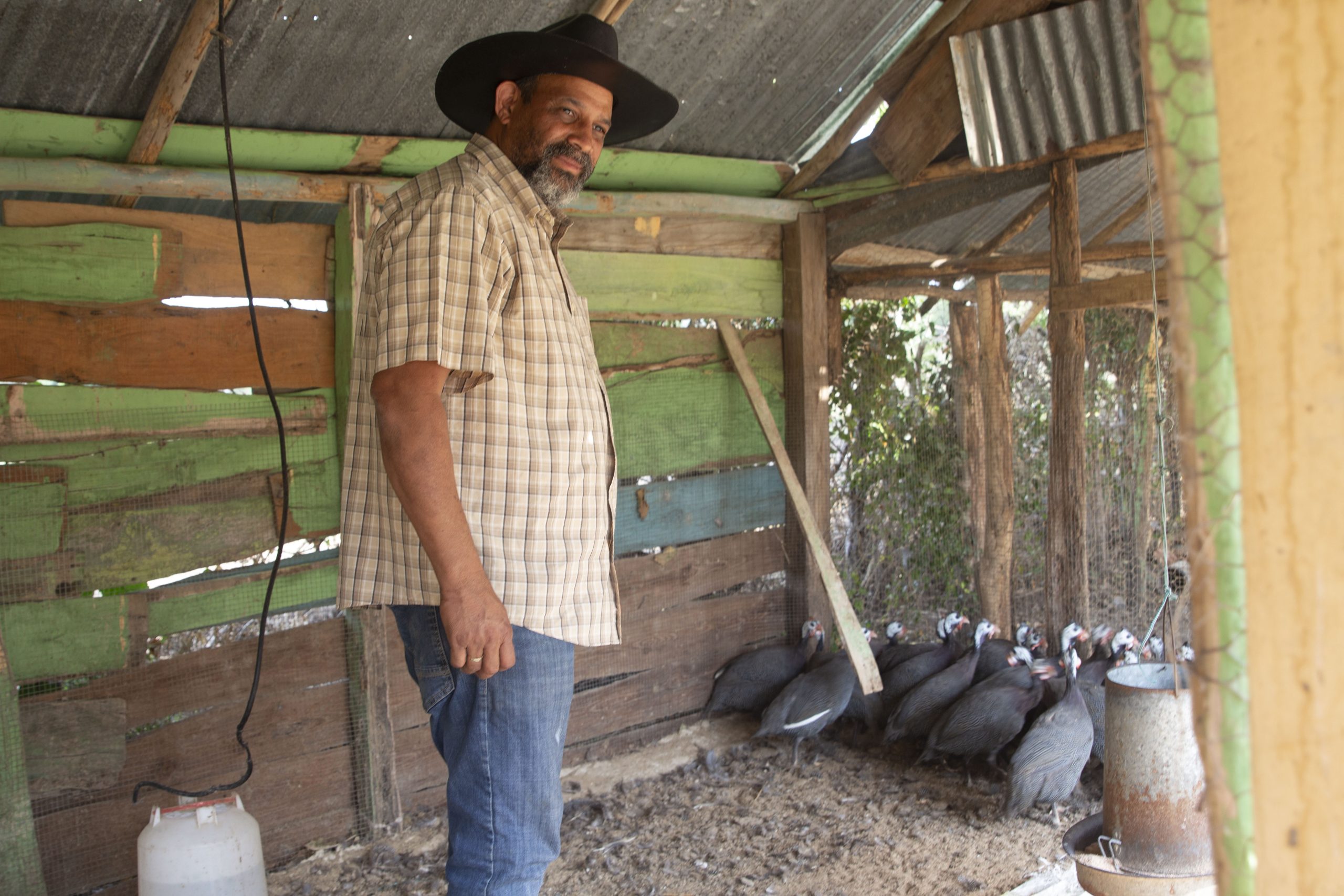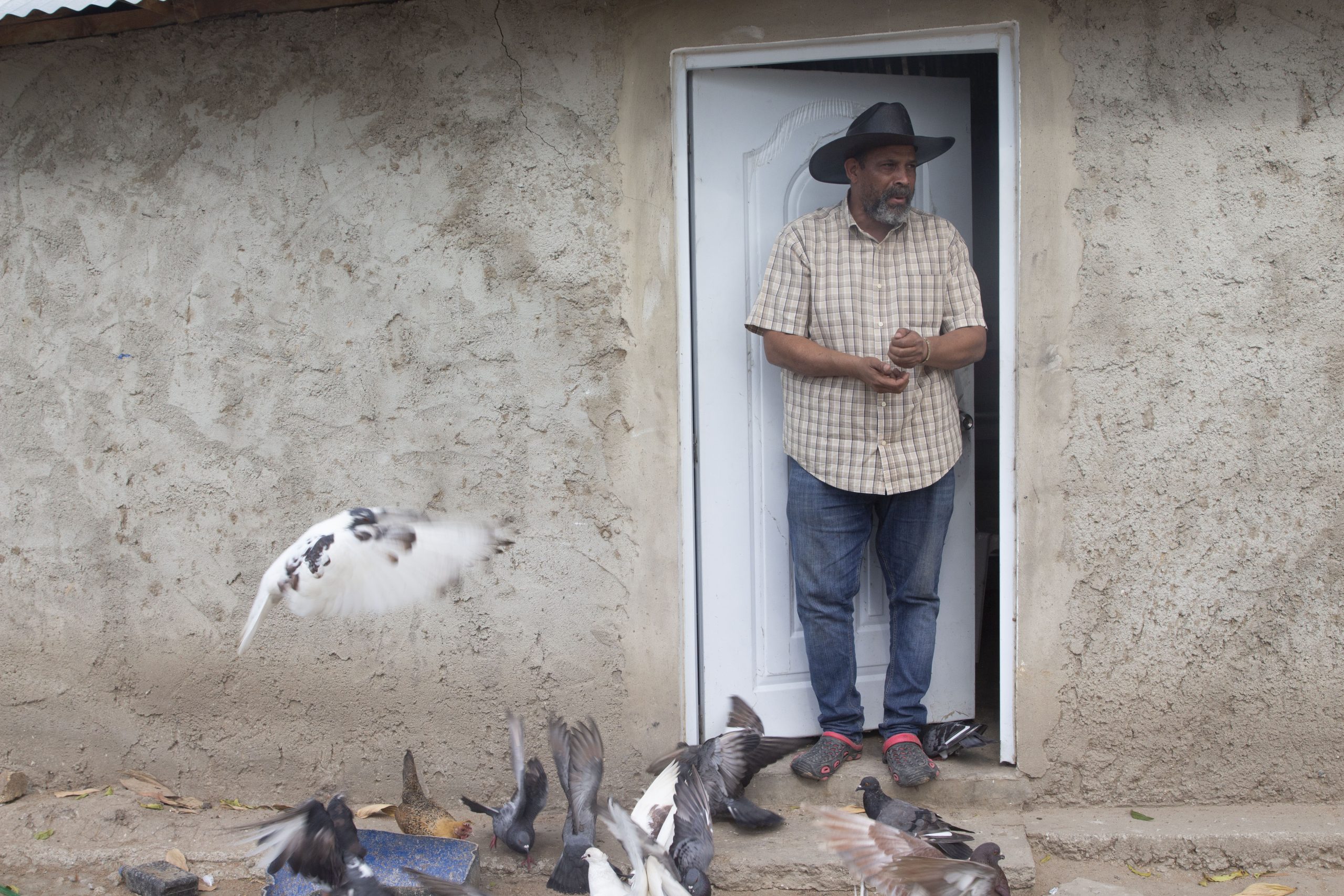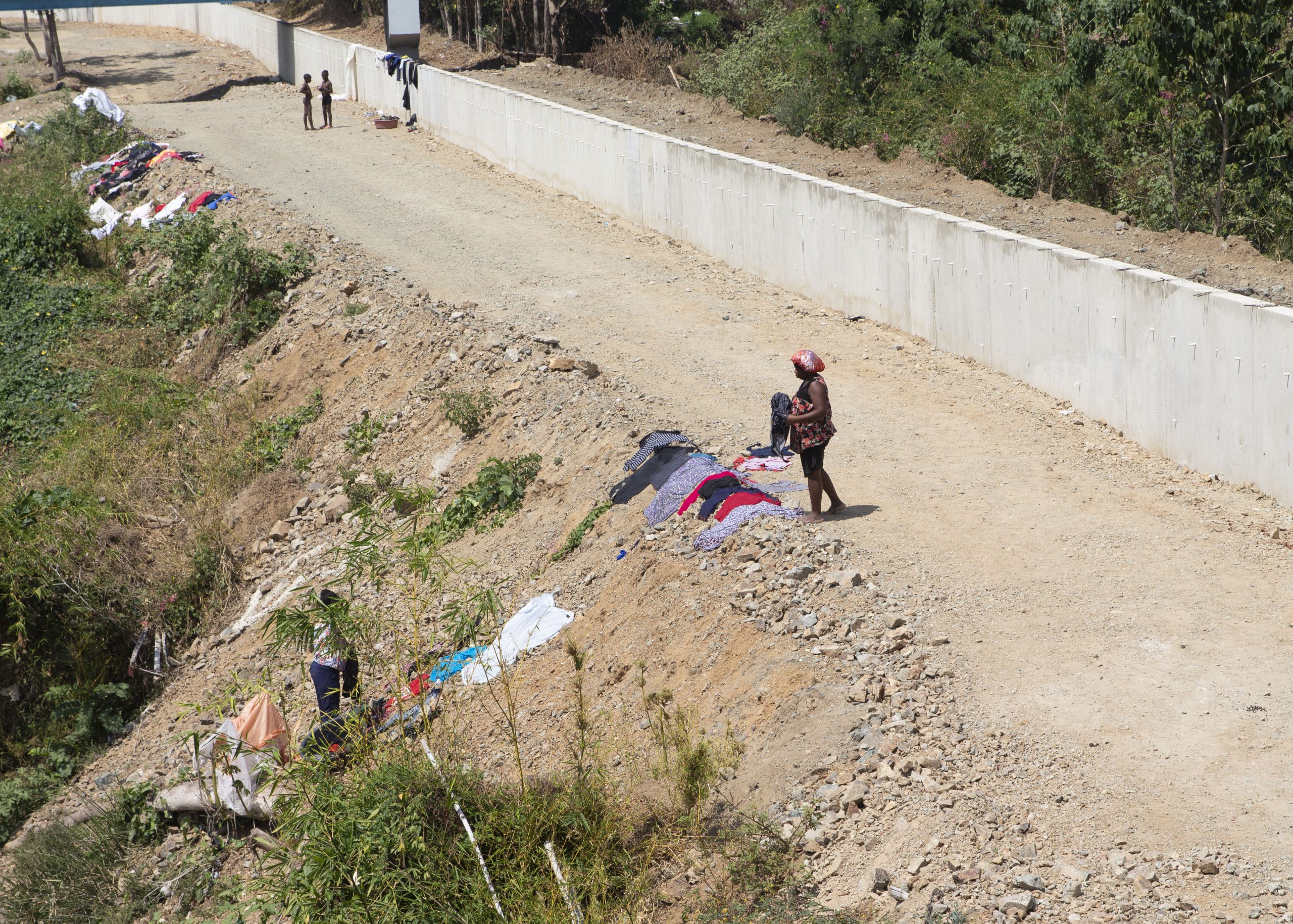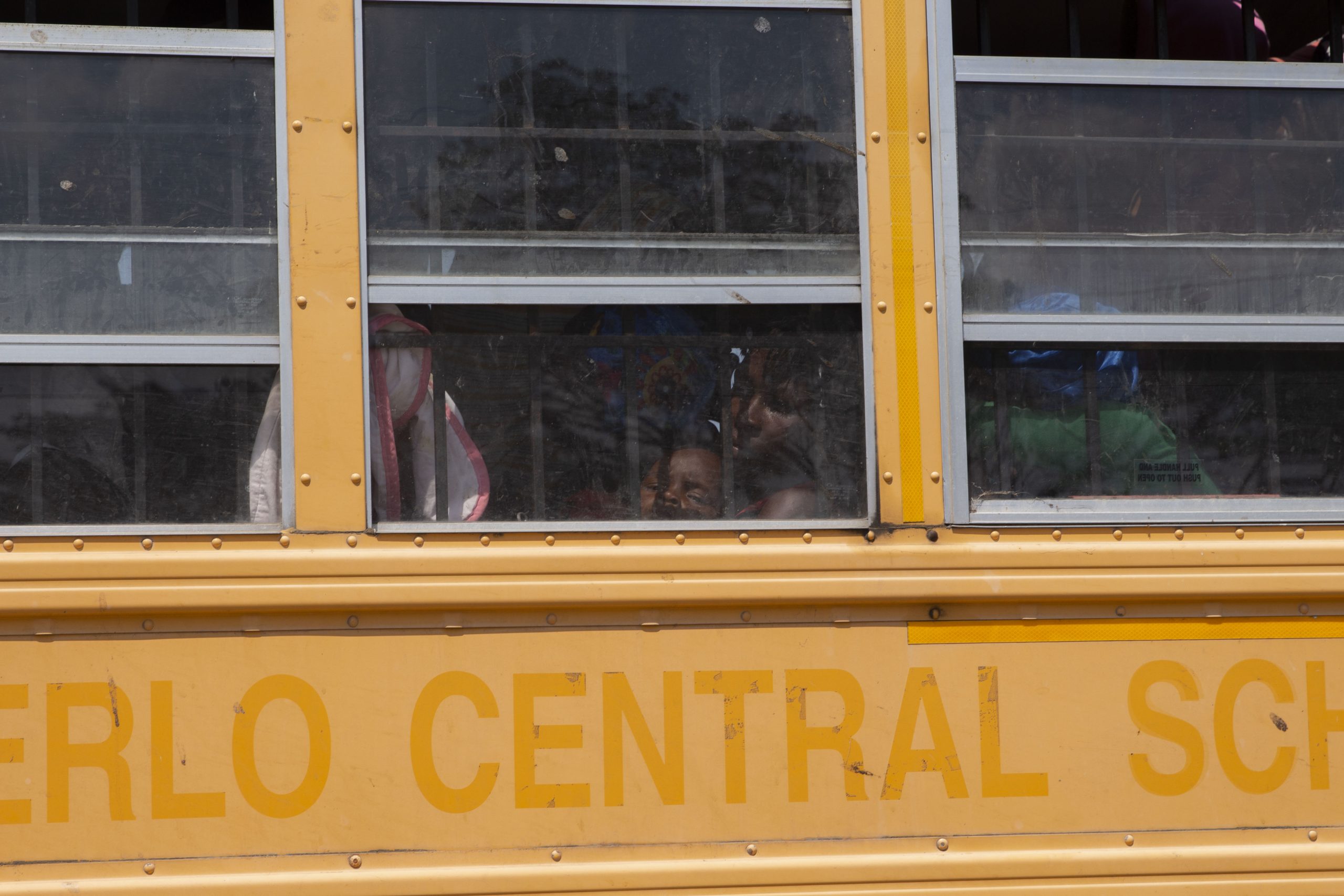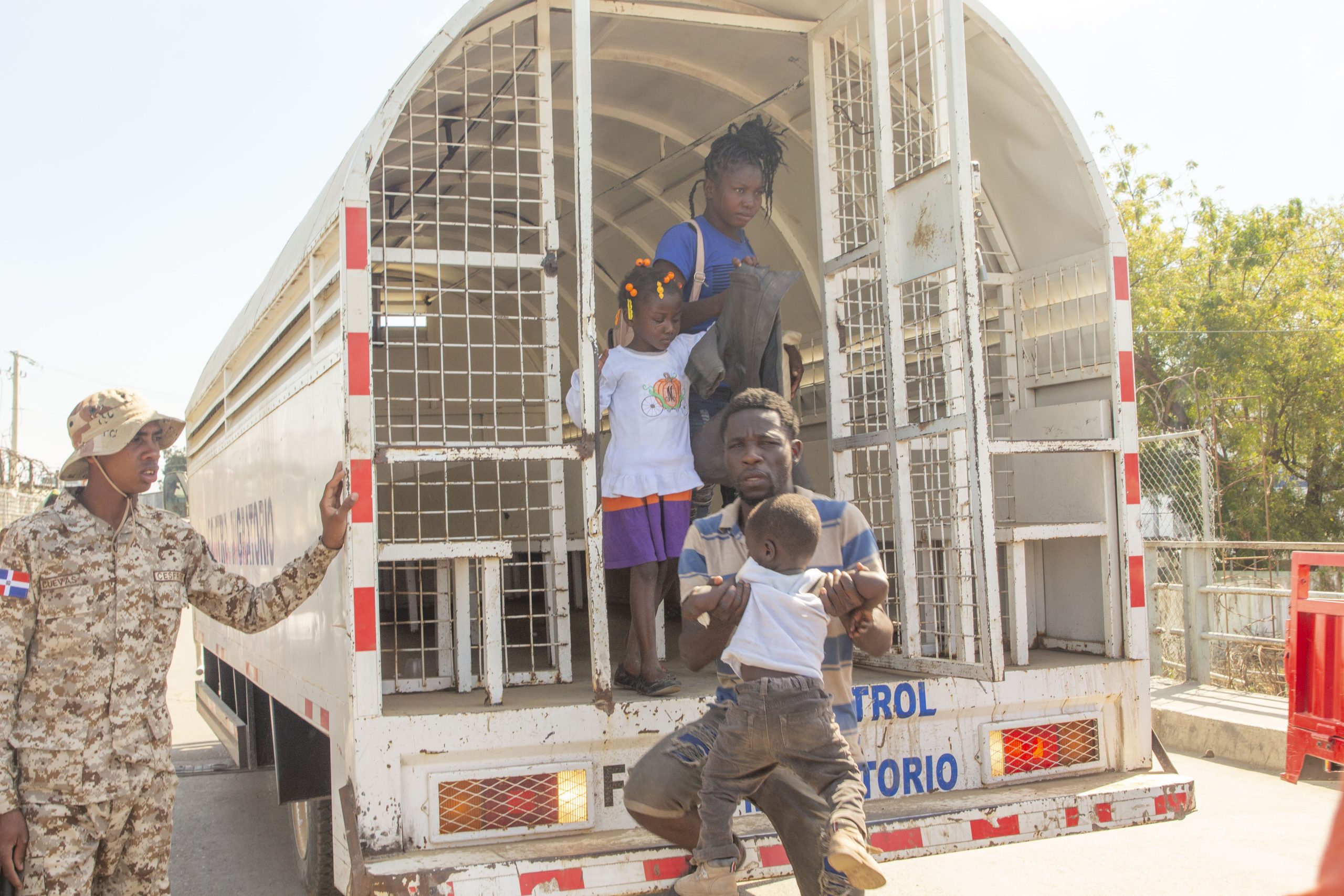- Slug: BC-CNS-Wall Frontiere,2040 words.
- 11 photos available (thumbnails, captions below).
By Roxanne De La Rosa
Cronkite Borderlands Project
DAJABÓN, Dominican Republic – It’s a breezy, partially cloudy day in March as Mayor Santiago Riverón puffs on a cigar while sitting outside his home on his sprawling ranch not far from the controversial border wall being built between Haiti and the Dominican Republic.
Riverón loves his country and takes pride in his Dominican heritage. And in an echo of anti-immigrant voices in the United States, he says Haitian people are “invading” his country.
The reasons for the construction of the wall that borders this northwestern city of 17,000, he says, are to prevent people from poverty-stricken, gang-overrun Haiti from illegally entering, and to make a resounding political statement.
“It has been embraced by Dominicans as a patriotic symbol, and that cannot be changed,” Riverón said. “That cannot be changed.”
The wall being built here would add to a growing list of border barriers worldwide. According to a March 2022 report by University of Quebec researcher Élisabeth Vallet, there were 74 border walls in the world, most of them constructed in the last two decades, and 15 others in various stages of planning at the time of her report.
Opponents of the Dominican wall say it will not prevent Haitians from trying to flee the ongoing violence in their country, the poorest in the Western Hemisphere, where violent gangs control large segments of the nation.
“We always say that we do not agree with any wall in any part of the world. This wall is being built to appease conservative and nationalist groups,” said William Charpantier Blanco, a leader at the nonprofit National Coalition for Migrations and Refugees. “The government’s narrative is that the wall is going to control organized crime. That will never happen. In no part of the world do border walls work.”
Riverón, the Dajabón mayor, says a border wall will help slow down drug trafficking, theft and prevent the gang-driven violence in Haiti from coming into his country. Yet Dominican supporters of the wall don’t expect it to solve everything. Some claim, for example, that border officials are corrupt and accept bribes from deported Haitians allowing them to come back into the country.
“The wall is a matter of national security. The wall is not going to solve the immigration issue because illegals cross the bridge (between Haiti and Dajabón),” Riverón said. ”And unfortunately, the military allows illegals to cross through checkpoints.”
As in the United States, regulating immigration has become a hot-button political issue in the Dominican Republic and, as in the U.S., the Dominican government decided that at least a partial solution to this problem was to build a wall. But compared to the Mexico–U.S. border wall, the Dominican wall is far less formidable.
The Dominican barrier will have a concrete base approximately 4-5 feet high, topped by integrated chain link fencing and finished off with barbed wire. It will stand nearly 13 feet high with watchtowers and surveillance cameras that have yet to be installed. Construction of the wall, which began in February 2022, has been slow and is behind schedule. According to government estimates, it will cost approximately $32 million to build and will cover about 106 miles of the 240-mile border between the two countries, leaving large segments of border unfenced.
The U.S. border wall is made of various materials – but all tougher than chain link. It is also as tall as 30 feet high in some segments, contributing to a five-fold increase in the number of traumatic injuries to those who have fallen trying to climb over it, according to a recent report by physicians in the San Diego region. Approximately 700 miles of the nearly 2,000 mile U.S.-Mexico border is fenced in some way. Technology, including drones, surveillance cameras and nearly 300 smart towers have been installed along the wall.
Dominican President Luis Abinader visited Dajabón in February of last year for a groundbreaking ceremony on the wall. Abinader is popular for his stance against immigration and his fiery rhetoric has stoked anti-Haitian sentiment. A poll of 1,214 Dominicans conducted in late April by Markestrategia indicated that 55 percent of those surveyed would vote to reelect him in the next presidential election in 2024.
For all of the strong feelings about immigration, Dajabón is a small example of the interdependence of the Dominican Republic and Haiti, which share the island of Hispaniola. In Dajabón, there is a weekly market where Haitians are allowed to cross the bridge into the Dominican city to sell their wares.
Haitians attending the market line up for hours until the gates open. They sell everything from used clothes to diapers. The desperation of Haitians can be seen in some of the items they bring to sell: a used Minnie Mouse toy car scribbled on with faded black marker or one very worn-down bar stool.
Mayor Riverón says he supports Haitians coming to visit and sell their goods in the Dominican marketplace but he expects them to return to their country at the end of the day. What he does not support is Haitians crossing into the country illegally. Riverón says he wants the international community to see that Haiti doesn’t need handouts, it needs resources to create sources of employment.
“It has become a disaster. Haiti is a country that has no authority. It is a country that is being governed by criminal gangs, many of which are being financed by politicians from their own country,” Riverón said. “Those politicians prefer disorder and take advantage of that disorder. That’s the situation in Haiti. Unfortunately, Haiti is not prepared to be a democratic country. It has to be a country that is dominated with a heavy hand.”
But interdependence of the two economies goes far beyond small markets and is rooted in the need for cheap labor. Haitian immigrants make up a large portion of the workforce in agriculture, construction and other sectors of poorly paid manual labor jobs in the Dominican Republic. In a February report, the Dominican College of Economists (Codeco) estimated that 700,000 Haitians are employed in the Dominican Republic, a country of about 11 million people. Immigration advocates even say the border wall is being built by the same people it is meant to keep out – Haitians who are fleeing their homeland due to poverty, violence and instability.
Along a portion of the border wall, the Dajabón River – also known as the Massacre River, after the massacre of French buccaneers by Spaniards in the 1700’s – runs between the two countries. Today hundreds of Haitians come to the river daily to wash their clothes and lay them out to dry on the nearby rocks. Haitians cross the river and hang their clothes to dry on the low concrete ledge of a mostly unfinished border wall.
Busloads of Haitians are deported daily, in plain sight of the border gates of Dajabón. Mothers with babies and young children in their arms are forced back into Haiti. Some have their only possessions in their hands. Under Abinader’s presidency, there has been a massive increase in Haitian deportations, including some deportees who are legally in the country.
Both Dominicans and Haitians are deeply affected by the current anti-Haitian movement in the country.
Carlos Zepeda is a rancher who needs Haitians to work his land. He isn’t convinced his country needs a new border fence. Instead he thinks what’s needed is comprehensive immigration reform.
“I want to help reform it (immigration), for us to have it as it should be,” Zepeda said. “Since I am a rancher, we need Haitian workers just as they are needed in the construction sector.”
Zepeda has found it difficult to keep and find workers to work his land due to anti-Haitian sentiments in the Dominican Republic. He says homes where Haitian migrants live are being raided in the middle of the night by government agents and workers are being detained and deported regardless of their legal status. Zepeda says during the night raids women are awakened and aren’t allowed to dress themselves before they are detained, and Haitian children scream and cry out of fear.
“There’s no need to create so much panic. But to avoid that, you have to reform it,” Zepeda said. “So that they (Haitians) don’t have to live that way with everything that is happening all over the country.”
Hector Perea and Zepeda are part of a group called Defensa Civil, or “Civil Defense,” which protects and fights for immigrant rights. Perea has been involved with this work for around 30 years and says his faith called on him to help.
“Protecting human beings, because human beings have no race or color, they must be defended wherever they go,” Perea said.
Perea, too, has seen the raids, which he says are a violation of human rights. He says Haitians are robbed by border officials of anything of value they own, including cell phones and televisions.
Another section of the wall is being constructed not far from El Partido where Zepeda and Perea live. When asked about the border wall being constructed Perea said:
“That’s practically not going to solve anything. Because the wall itself is about money. We have to unite our ideals and work, share the little we have because we are human beings. Our creator has no border, he has no color, we are all his children and his creation.”
Haiti has been plagued with gang violence and upheaval since the assassination of the country’s president in July 2021. Thousands of Haitians have been displaced due to the ongoing turmoil, which has been compounded by deadly natural disasters. While many Haitians have left the island in search of stability, the bulk of the displaced have looked to the Dominican Republic, sometimes overwhelming government services. At the same time, the Dominican Republic relies heavily on Haitians for labor and Haiti is the country’s key trade partner.
“Although the Dominicans do not like to admit it, this is an island in which both sides are needed,” said Zinnia Martinez, a communications coordinator for the International Organization for Migration. “That is why it is a longstanding relationship and despite that the Haitian economy is very, very crippled, they continue to be our main buyers.”
The country depends on Haitian workers like Julbeon Sainvilien who has lived in the Dominican Republic for the past 23 years. Sainvillen works the sugarcane fields of a Dominican landowner and also works in construction, training other workers to build homes.
Sainvilien lives with his wife and children in a small wooden shack of a home on the land he works. Nonetheless, Sainvilien is grateful to work and says his life in El Partido has been tranquil for the most part. Every morning he gets up around 3 a.m. to cut weeds and work in the sugar fields.
“Thanks to God. We live here peacefully,” Sainvilien said.
Across the street from Sainvilien home is a different story. Sainvilien has witnessed Haitian migrants living there being raided by border law enforcement in the middle of the night.
Sainvilien’s wife, Elimene Onexile, says Haitian migrants in the home are detained and deported whether they are documented or not. Onexile fears one day, even though her family is documented, border officials may come knocking on her door in the middle of the night.
“It is an abuse. I feel very bad that they are detaining documented Haitian immigrants. I came here (Dominican Republic) to make a life,” Onexile said.
Onexile and Sainvilien say they are protected because of the Dominican land owner. Onexile works cooking, cleaning and washing in the Dominican landowner’s home and also cares for an elderly woman at night.
“Here in the Dominican Republic the majority of the workers are immigrants,” Onexile said. “The Dominicans have no reason to detain immigrants who are working all day and all night.”
Onexile says in all her years living in the Dominican Republic she has never seen or experienced anything like what is going on.
“These have been the worst times ever,” Onexile said.
Onexile and Sainvillen are both nearing their 50s and worry about the day one of them is unable to work anymore. Onexile says an immigrant who cannot work cannot eat.
“No employer is going to help an immigrant who cannot work,” she said.
– Cronkite Borderlands Project is a multimedia reporting program in which students cover human rights, immigration and border issues in the U.S. and abroad in both English and Spanish.
For more stories from Cronkite News, visit cronkitenews.azpbs.org.
^__=
A group of Haitians, including a young girl, are deported back to Haiti at the border gates in Dajabón, Dominican Republic, on March 4, 2023. (Photo by Roxanne De La Rosa/Cronkite Borderlands Project)
Dajabón Mayor Santiago Riverón stands outside a door in his home near his town in the Dominican Republic on March 4, 2023. (Photo by Roxanne De La Rosa/Cronkite Borderlands Project)
Haitians line up for hours before the gates of Dajabón open to sell their items in the Dominican marketplace on March 5, 2023. (Photo by Roxanne De La Rosa/Cronkite Borderlands Project)
Dajabón Mayor Santiago Riverón feeds the various animals he owns on his ranch in the Dominican Republic on March 4, 2023. (Photo by Roxanne De La Rosa/Cronkite Borderlands Project)
Dajabón Mayor Santiago Riverón’s doves fly as he feeds them near his town in the Dominican Republic on March 4, 2023. (Photo by Roxanne De La Rosa/Cronkite Borderlands Project)
Mayor Santiago Riverón gives reporters a tour of his ranch and the animals he owns near his town of Dajabón in the Dominican Republic on March 4, 2023. (Photo by Roxanne De La Rosa/Cronkite Borderlands Project)
Dajabón Mayor Santiago Riverón throws bird seed to his doves and other birds at his ranch in the Dominican Republic on March 4, 2023. (Photo by Roxanne De La Rosa/Cronkite Borderlands Project)
A Haitian woman washes and dries her clothes near the unfinished Dominican border wall. In the background, clothes hang to dry on the wall near Dajabón, Dominican Republic, on March 4, 2023. (Photo by Roxanne De La Rosa/Cronkite Borderlands Project)
A Haitian mother holds her baby in her arms as she is deported back to Haiti through the border gates at Dajabón, Dominican Republic, on March 4, 2023. (Photo by Roxanne De La Rosa/Cronkite Borderlands Project)
A Haitian mother and her child wait to get off a deportation bus in Dajabón, Dominican Republic, on March 4, 2023. (Photo by Roxanne De La Rosa/Cronkite Borderlands Project)
A Haitian family is deported back to Haiti from an immigration bus in the Dominican Republic in March. (Photo by Roxanne De La Rosa/Cronkite Borderlands Project)

